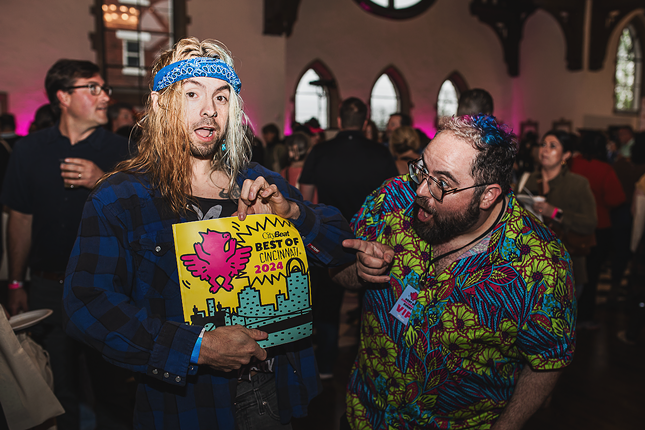A Look Inside the Life of Cincinnati Ultramarathon Runner and Educator Harvey Lewis
By CityBeat Staff on Fri, Nov 6, 2020 at 1:36 pm
Many Cincinnatians may know Harvey Lewis as a social studies teacher at the School for Creative and Performing Arts in Over-the-Rhine. But outside the classroom, Lewis’ true talents shine. The 44-year-old, who runs to school every day, has had a 24-year-long career of competing in ultra-marathons, races that are between two and 10 times the length of a regular 26.2-mile marathon and take multiple days to complete.
His list of achievements includes first place at the Badwater 135-mile race, which spans from Death Valley to Mt. Whitney, California, and most recently running 278 miles at the Big Backyard Ultra in Tennessee in October 2020. In 2018, he ran the 2,190-mile Appalachian Trail in 49 days, collaborating with Harris Media Co. to produce the film Like Harvey Like Son. The documentary screens 7 p.m. on Nov. 10 and Nov. 12 at the Mariemont Theatre and will be available on streaming platforms before Christmas.
Those baffled by Lewis’ feats of endurance will find it surprising that the athlete was a late bloomer. He started running in middle and high school, but, as he recounts, “usually finished toward the back of the pack.” During his first marathon, he was exhausted after only mile 8, and “managed to finish walking and running, walking and running.”
But Lewis had bigger dreams than the marathon; he wanted to see the world and climb mountains. As a college student, however, lack of funds and free time got in the way, and Lewis settled for a different kind of adventure: the FANS 24-hour race. Competitors have one goal — to run as many miles as possible in 24 hours. Lewis completed 82.25 miles, and his love for ultra-running was born.
He went on to compete in a variety of ultras, from the hottest race in the world in Death Valley, to one of the coldest in northern Minnesota, as well as other events around the world. But his most memorable racing experience is the Gobi March Ultra in Mongolia, an international event in which he competed in 2016.
“You had to carry all of your own gear in your backpack,” Lewis says. “You had to follow a GPS device and there were no course markings whatsoever. You cross a river; you go up over a mountain that’s 10,000 feet. You could easily (go over) a ravine that had a drop off of 200 feet and just fall in the middle of the night. There was a pack of dogs at one time.”
The Gobi March covers over 240 miles, and certainly pushes the limits of human ability. But two years later, Lewis had his sights on a much longer distance. In 2018, he attempted to break the speed record on the Appalachian Trail, a traverse beginning in Georgia and ending in Maine. In the ultra-endurance world, a record like this is known as an FKT, or Fastest Known Time.
This journey was “a whole other beast,” and the runner couldn’t have done it without a dedicated group of friends to act as his crew as well as impromptu visits from locals in each state he passed through.
Lewis details his routine for those grueling 49 days: “Every single day I would start at typically around 5 a.m. or slightly before. I would eat as fast as humanly possible and I would get myself dressed and that would be it. I would be off.”
Throughout the 15 to 18 hours he ran each day, Lewis' father would drive a borrowed van to meet him at various points on the trail and provide food and other aid.
The athlete smiles as he remembers the “crazy things” they did together. “There were days that were just lightning (and) rainstorms, and days where we missed each other for 30-some miles, and we had no idea if I was OK or if he was OK. (Sometimes) I would meet him on my last mile of the day, and we would finish that mile together.”
“There wasn’t a single time where he said a single negative thing, and at 78, he’s pushing the barriers of what normal people are doing.”
Normally, Lewis doesn’t experience injuries while running, but the Appalachian Trail was different. He fell “over 100 times on the journey” and experienced painful tendinitis, but never threw in the towel. “I survived,” he says. “That is the best part. I survived.”
He is excited for Cincinnatians to see Like Harvey Like Son in November, and experience not only the story of the father-son relationship, but also the beauty of the Appalachian Trail.
Lewis invited me into his home on a hazy October morning to get an inside look on his preparation for the Big Backyard Ultra. Hosted in rural Bell Buckle, Tennessee, the race requires competitors to run a 4.166667-mile loop once every hour. This continues for days until every runner except one resigns from lack of sleep or stamina. The last person standing is the winner of the race. In 2017, Lewis ran 58 loops, or 242 miles, and ranked second place.
The runner showed me his gear for the race – multiple shoes, socks, shirts, and hats, along with ample food, energy bars, and drink mixes. But despite his detailed list of equipment, Lewis insists that the key to winning is not the body, but the mind.
“The toughest finish line to get to,” he says, “is the one that’s in front of you.” There are techniques he uses to push through rough moments, such as “looking forward to the next small reward that is at the end of that loop, whether that’s a little bit of food or two minutes to lay down and take a nap before you get back up.”
He admits that these things might “seem minute,” but they help him endure. “It makes you appreciate what you have in life, because after you finish, a meal never tasted so good.”
Remarkably, the athlete is vegan and has been for years. After his mother had a stroke, Lewis began studying the impact of diet on health and revealed that, “we would do a lot better if we move toward more plant-based foods for the benefit of curbing the No. 1 killer (diseases) in America.”
He insists that his vegan diet is what has kept him strong over the course of his 24-year career. For Lewis, the plant-based food gives him more energy, regulates his digestion, and reduces inflammation. He showed me his signature, pre-run meal – a bowl of granola with almond milk, topped with chia seeds and dragon fruit.
After eating breakfast, I joined Lewis on his morning commute to the School for Creative and Performing Arts from his home in East Walnut Hills. Seven years ago, he screened a film in his government class about climate change and rising sea levels and afterward promised his students he would stop driving to work. He has been commuting by running ever since.
I followed Lewis up Mount Adams where we were rewarded with a view of the sunrise at Eden Park. We then dropped down to the riverside trail and crossed into downtown, where he showed me some of his favorite, historic cobblestone alleyways in the city center. Before beginning his day of teaching at SCPA, Lewis and I stopped at Washington Park, where he was excited to see a few of his students.
“It’s about three miles each way, so it’s not a super long distance for me,” he says. “I just carry my things in my backpack and it’s really pretty easy to manage. Oftentimes on my way home, (I’ll) run over to Kentucky and back and add on an extra five miles to that normal route.”
The teacher has even run to the Northern Kentucky airport to catch a flight.
Lewis wants to convince others to run to work, too.
“Instead of being in a car for 15 minutes each way, I’m maximizing my time to be outdoors. Doing something active (each day) is so critical for the quality of life. It takes some effort to put into it, but it’s what we get in return…it’s just like investing.”
In addition to running to work, Lewis has a few tips for Cincinnati locals who want to start running or take their running to the next level.
"It’s so important to keep it fun and (take) small steps. Have a goal out there that’s three to four months out. It doesn't have to be a formal race. You could say I’m going to run for two hours straight, or I’m going to run a 5k, or I’m going to try to run my fastest time on a track for half a mile, whatever it is,” he says.
Second, Lewis swears by his own personal calendar book. “I write down what I do every day, and I really think that’s a motivational technique. It’s very helpful to see what you have done and see your progress.”
“Also, have someone who can help you be accountable,” Lewis says. “There are all these different running clubs (in Cincinnati) and that’s incredible because you'll build a camaraderie with those people and it'll hold you accountable.”
Lastly, “it’s really fun to go explore,” he says. Lewis gives the example of going to a different park in Cincinnati every day and running for 30 minutes. “It’s just being creative like that. Or you can get your dog involved.”
The weekend after our interview, I followed Lewis on social media as he competed in the Big Backyard Ultra: 21 countries and 300 runners were in contention, each hosting their race remotely. Lewis was one of the 14 Americans running in Tennessee.
The runner periodically broadcasted live on Facebook to give his fans updates. Despite the increasing mileage, he always seemed impossibly positive and mentally strong.
After 58 hours, 11 Americans dropped due to exhaustion, and Lewis was one of only three remaining. He passed the 200-mile mark and donned a lucky shirt in celebration. Ten hours later, he and fellow U.S. athlete Courtney Dauwalter were the only two left, and Lewis had surpassed his personal best of 242 miles.
By the third morning, he’d completed his 67th lap, with 278.7 total miles under his belt. The sleep deprivation, exhaustion, and now hallucinations were taking their toll. Lewis left for a 68th loop but was unable to finish.
After a grueling 67 hours, the dogged ultrarunner had finally met his match.
"After running ultras for nearly a quarter century I’m still learning and amazed that I can go so much further than I ever dreamed as a young man,” he says.
Following the race, the teacher will quietly return to his daily run-commute and continue training until his next epic journey presents itself. Somewhere in Eden Park, Over-the-Rhine, or down by the Riverwalk, Cincinnati locals will still find Lewis with a grin on his face and a Team USA backpack around his shoulders, navigating through the city on his way to work.
For the 44-year-old ultramarathoner, there is no Olympic fame or lavish awards ceremony for completing feats that stretch the limits of human potential. Instead, Lewis relishes the joys, the challenges, and the peace that running brings to his life, while never forgetting the streets of the city he calls home.
Photos by Vincent DiFrancesco
Scroll down to view images
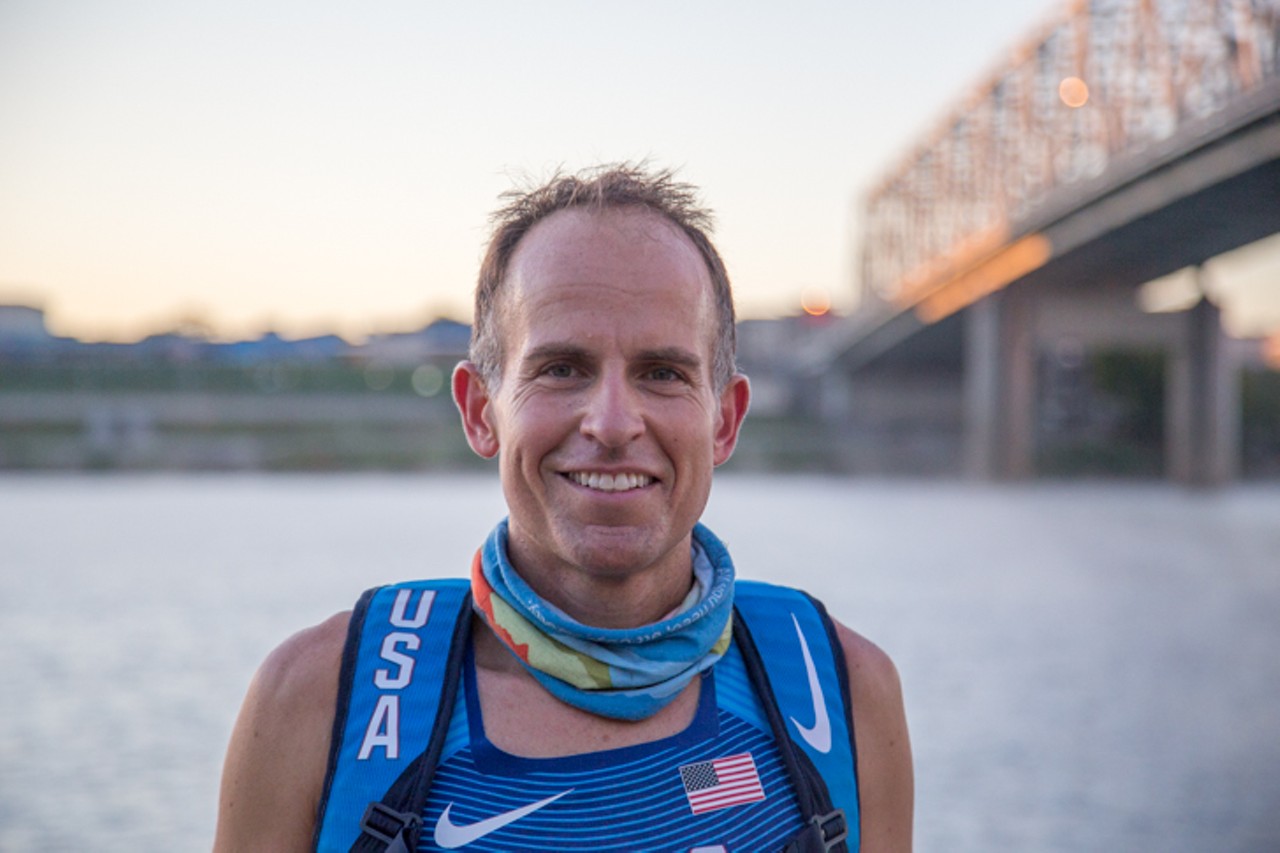
Vincent DiFrancesco
As part of his training, Cincinnati teacher and elite ultramarathoner Harvey Lewis runs to work each day.
1 of 20
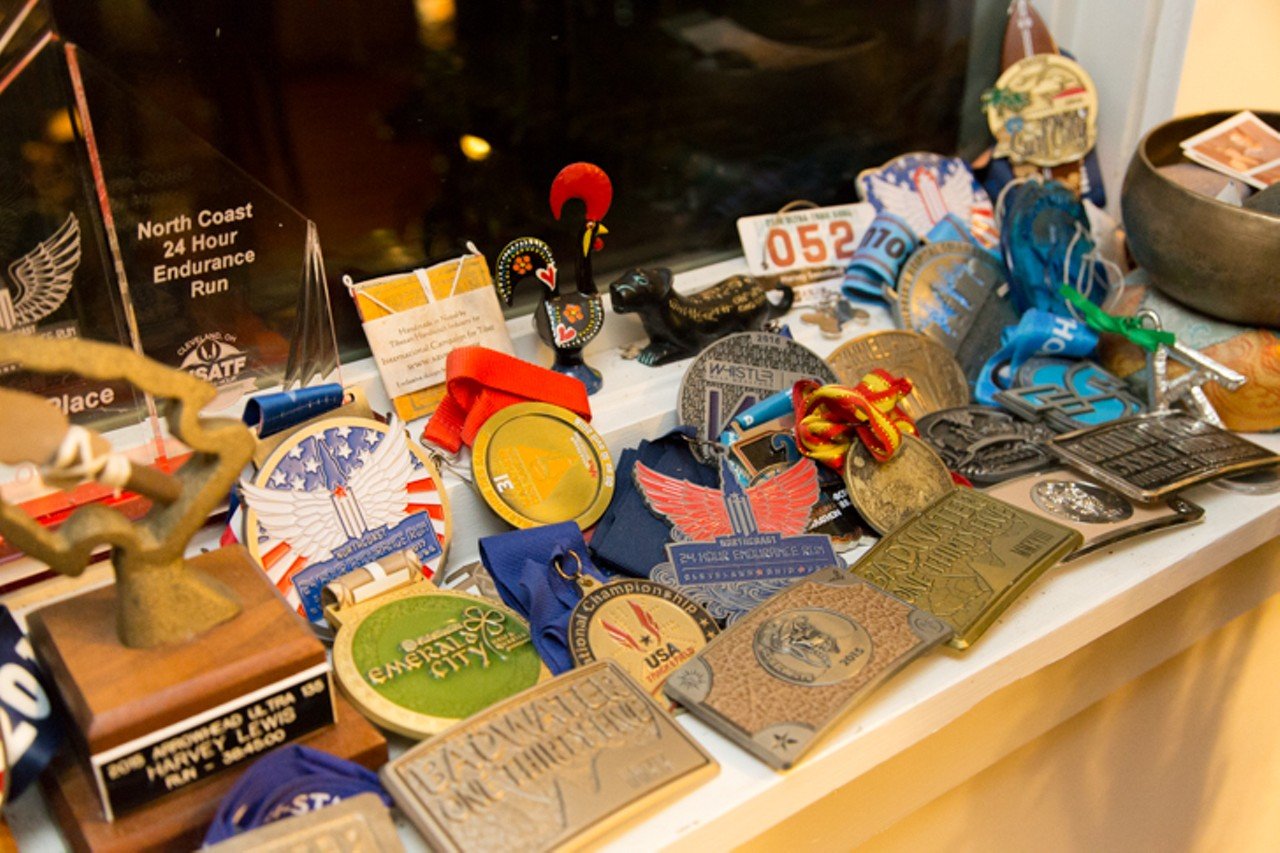
Vincent DiFrancesco
Lewis’s 24-year career includes completing international events such as the Marathon Des Sables in Morocco, the Gobi Trail Ultra in Mongolia, and winning the Badwater 135-mile race in Death Valley, California.
2 of 20
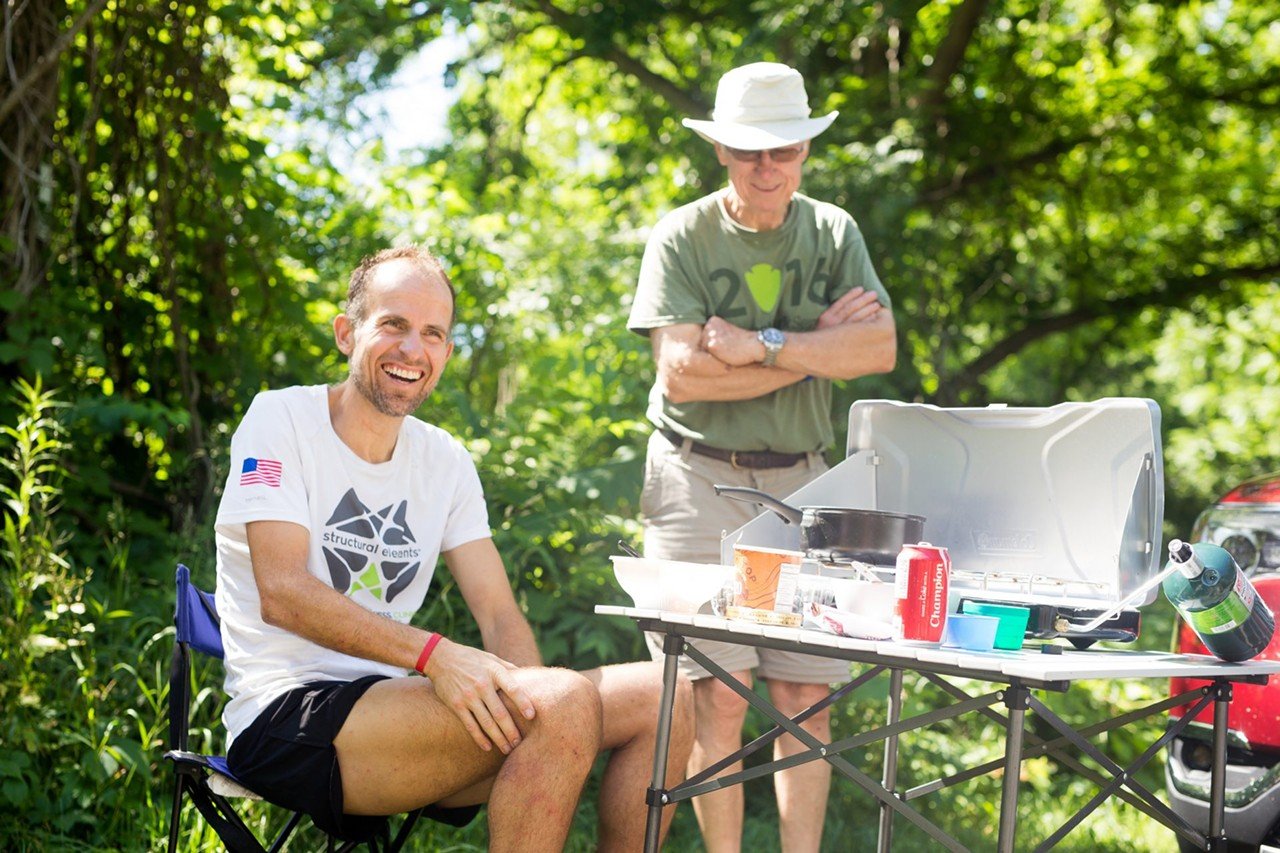
Vincent DiFrancesco
In 2018, Lewis ran the 2,190-mile Appalachian trail in 49 days, collaborating with Harris Media Company to produce the film Like Harvey Like Son. The documentary screens Nov. 10 and Nov. 12 at 7 p.m. at the Mariemont Theatre and will be available on streaming platforms before Christmas.
Photo by Harris Media Co.
Photo by Harris Media Co.
3 of 20
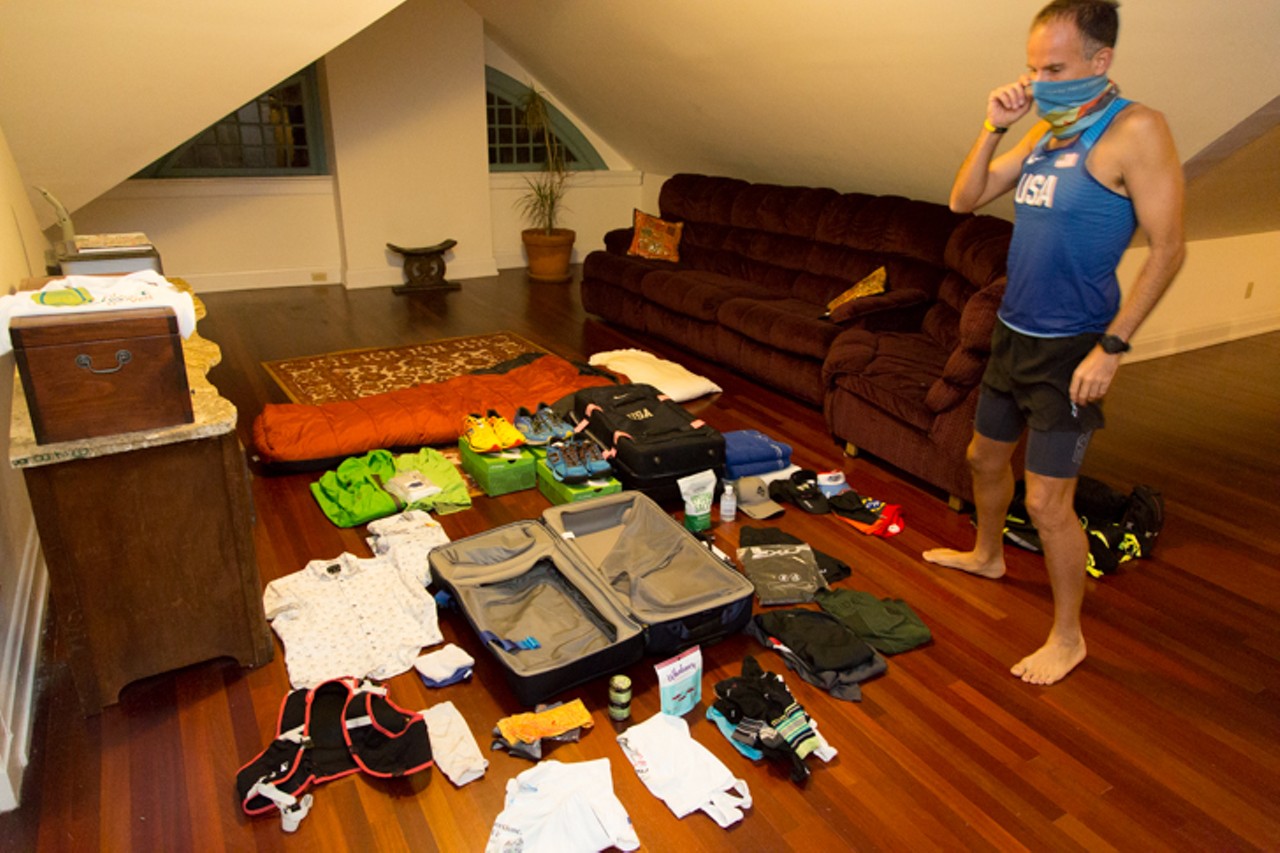
Vincent DiFrancesco
I joined Lewis as he organized his gear for an upcoming ultra-marathon, the Big Backyard Ultra. The race requires competitors to run a 4.166667-mile loop once every hour. This continues for days until every runner except one resigns from lack of sleep or stamina, with the last person standing crowned winner of the race. In 2017, Lewis ran 58 loops, or 242 miles, and ranked third place.
4 of 20
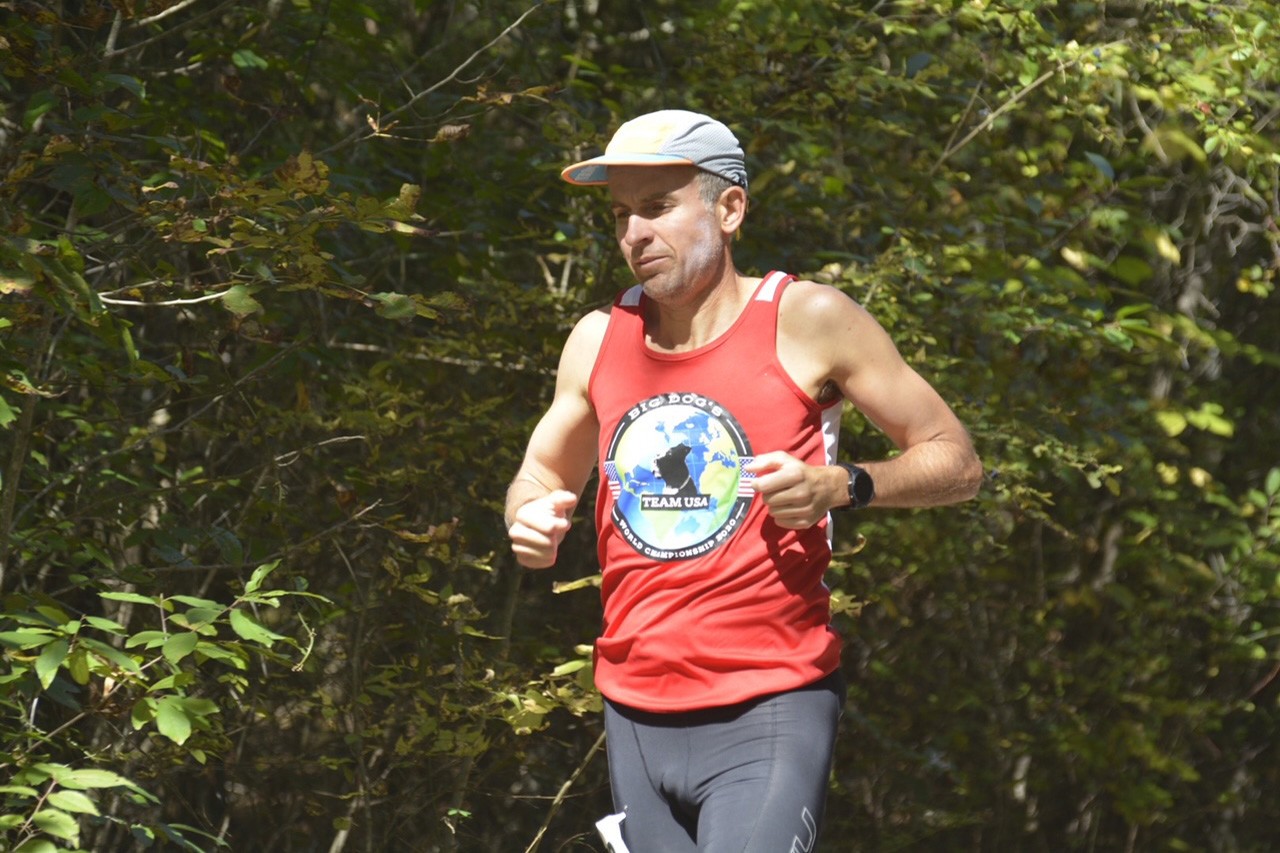
Vincent DiFrancesco
At the October 2020 event, Harvey Lewis took second place to Colorado runner Courtney Dauwalter, running 278 Miles in 67 hours and topping his personal best.
Photo by Tracey Outlaw
Photo by Tracey Outlaw
5 of 20
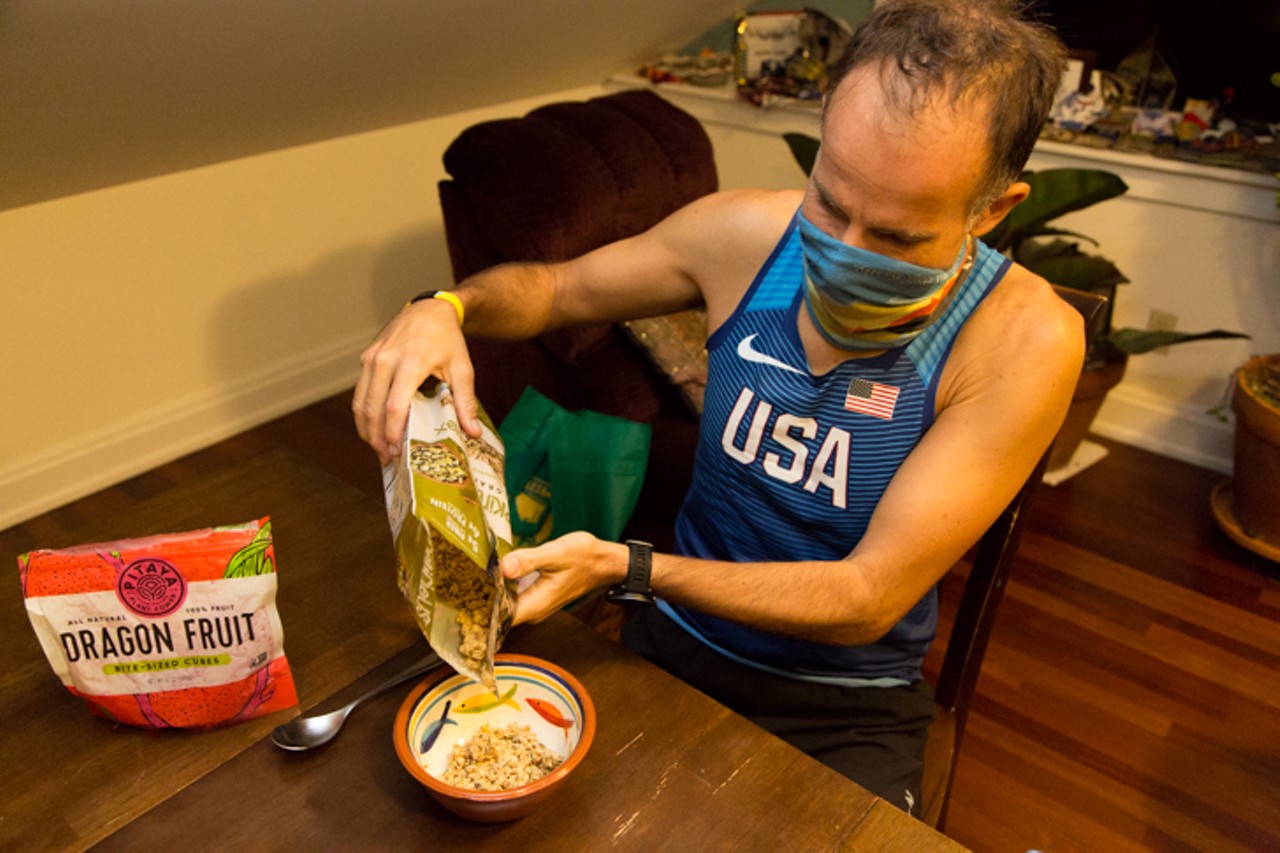
Vincent DiFrancesco
The ultra-runner insists that his vegan diet is what has kept him strong over the course of his 24-year career. The plant-based food gives him more energy, regulates his digestion, and reduces inflammation.
6 of 20
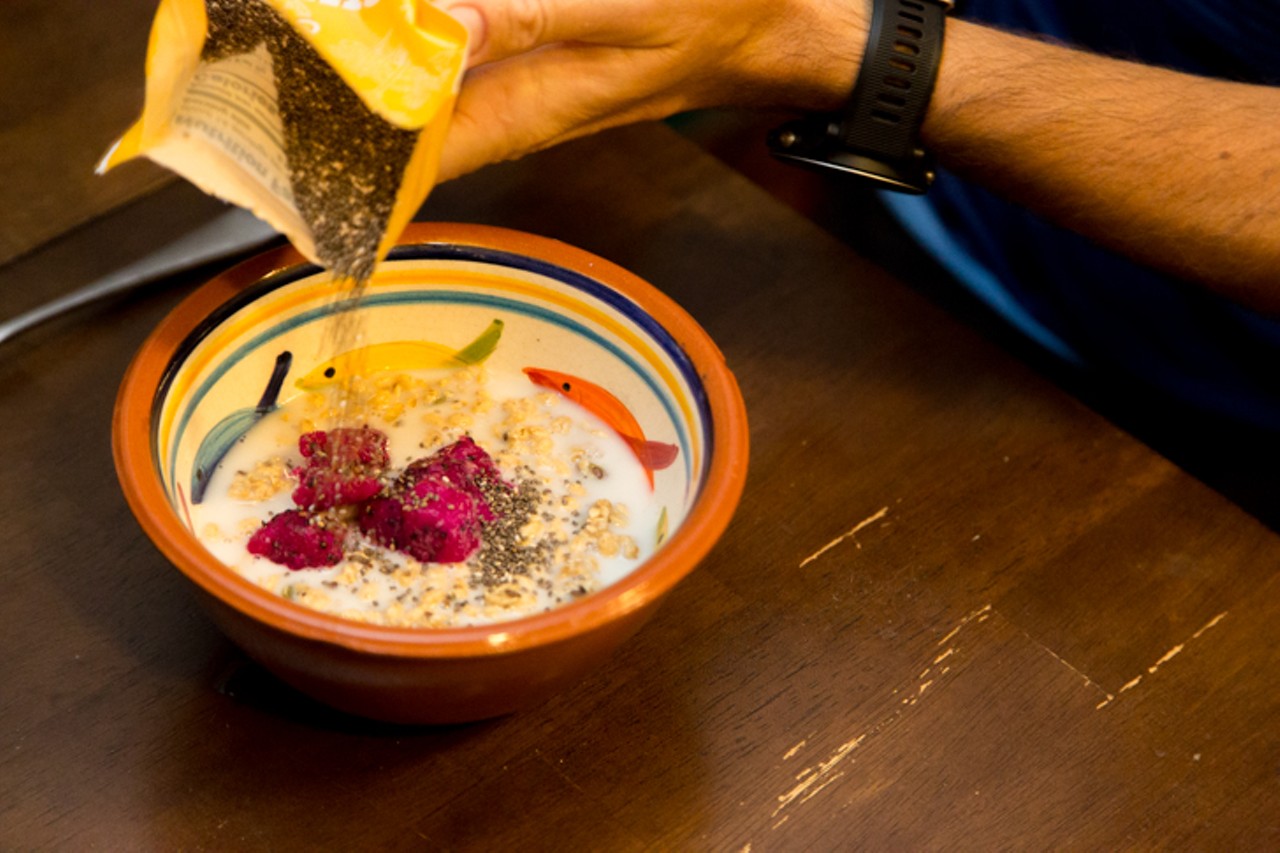
Vincent DiFrancesco
His regular, pre-run meal is a bowl of granola with almond milk, topped with chia seeds and dragon fruit.
7 of 20
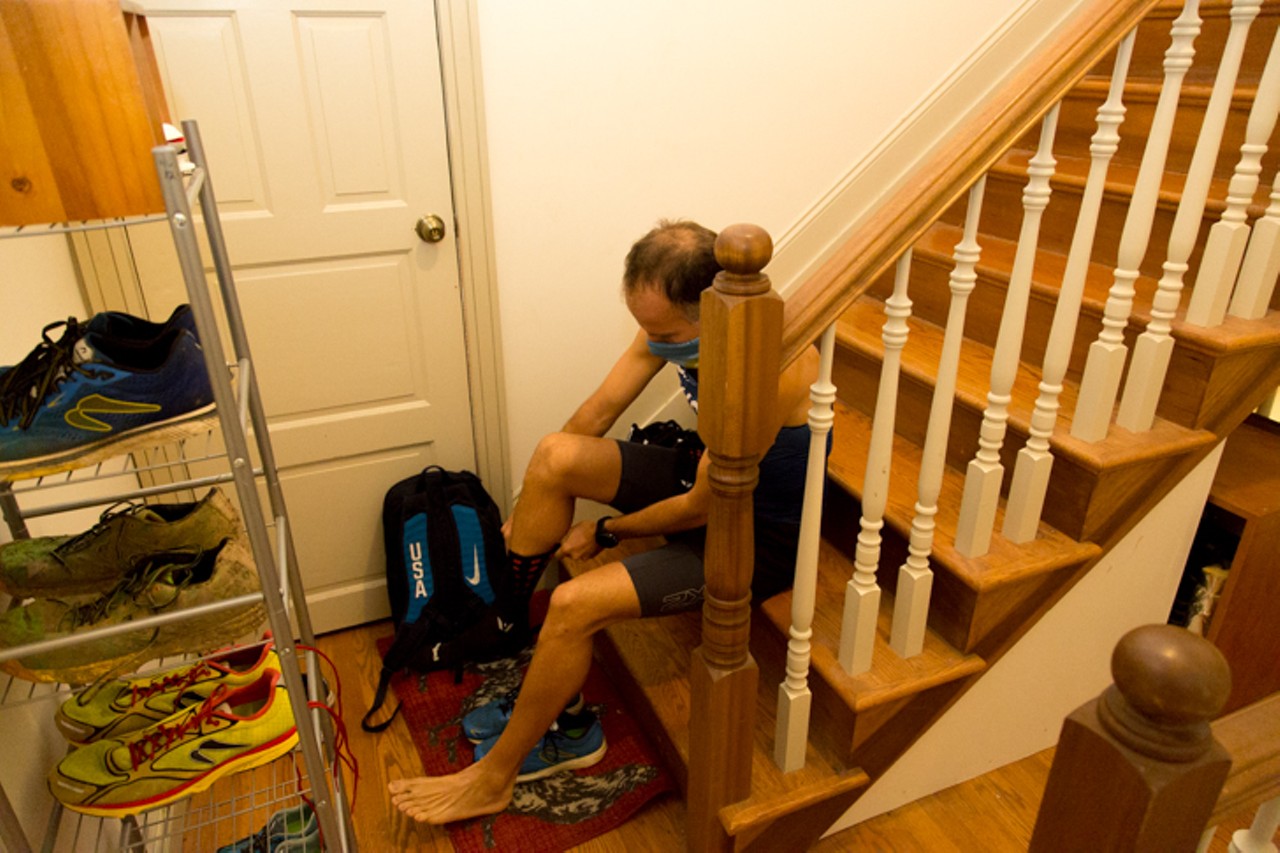
Vincent DiFrancesco
8 of 20
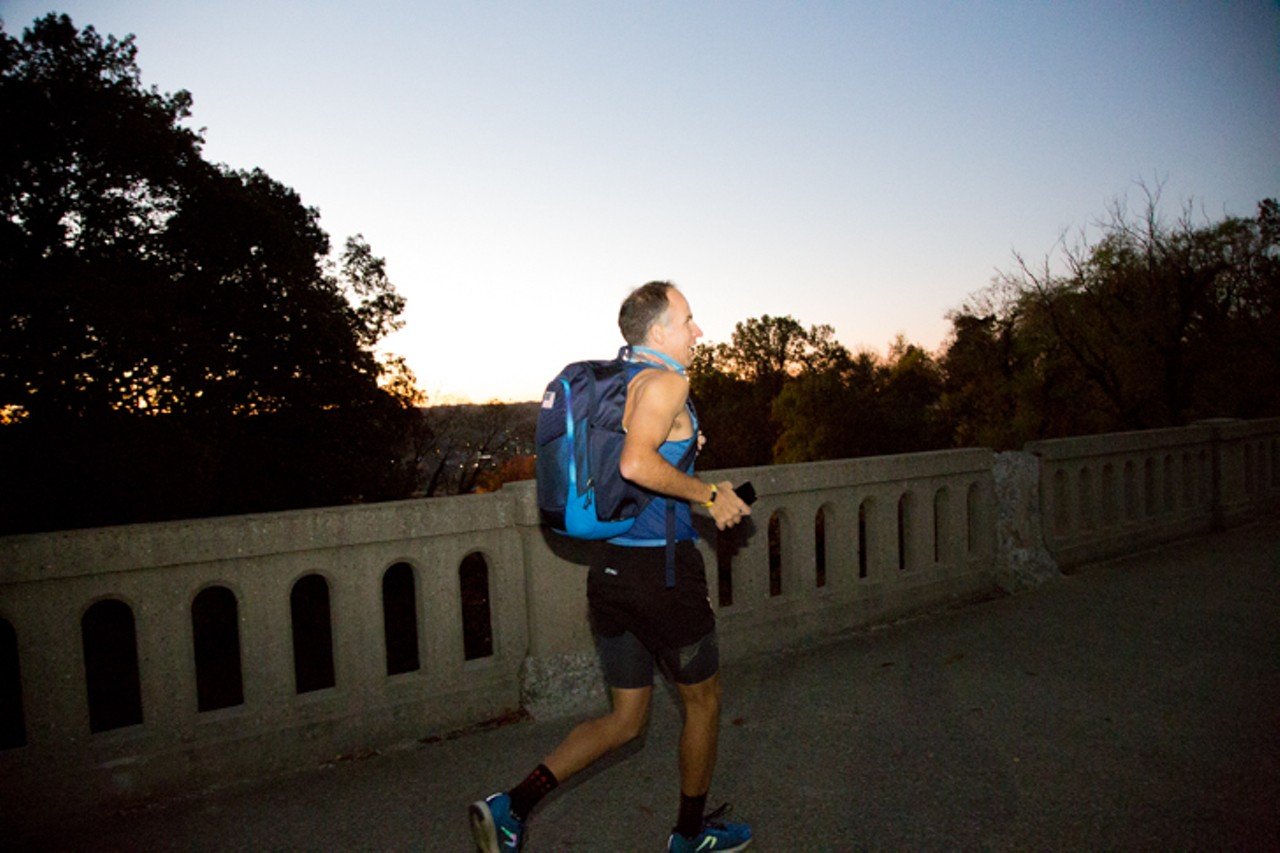
Vincent DiFrancesco
Lewis says, “It's always the step to get out the door that's the hardest for everybody. So, having that ritual of having to do the run commute, it's like I don't even think in the morning, I just go. It's just automatic to me, like turning on the light.”
9 of 20
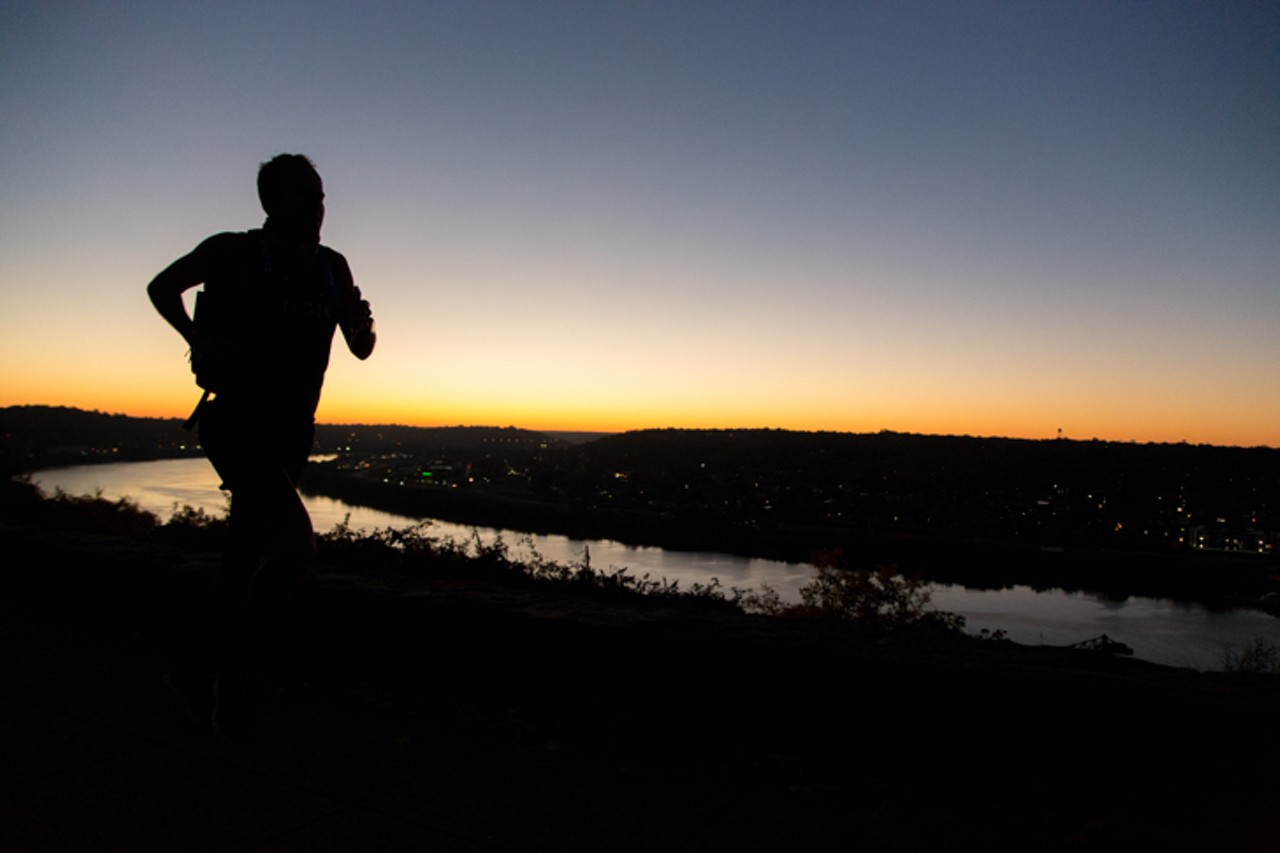
Vincent DiFrancesco
Catching the sunrise in Eden Park is one of the runner’s favorite morning rituals, but the route he takes may vary day-to-day. Occasionally he’ll add on another 5 miles by crossing into Kentucky and back. He’s even run to the Northern Kentucky Airport to catch a flight.
10 of 20
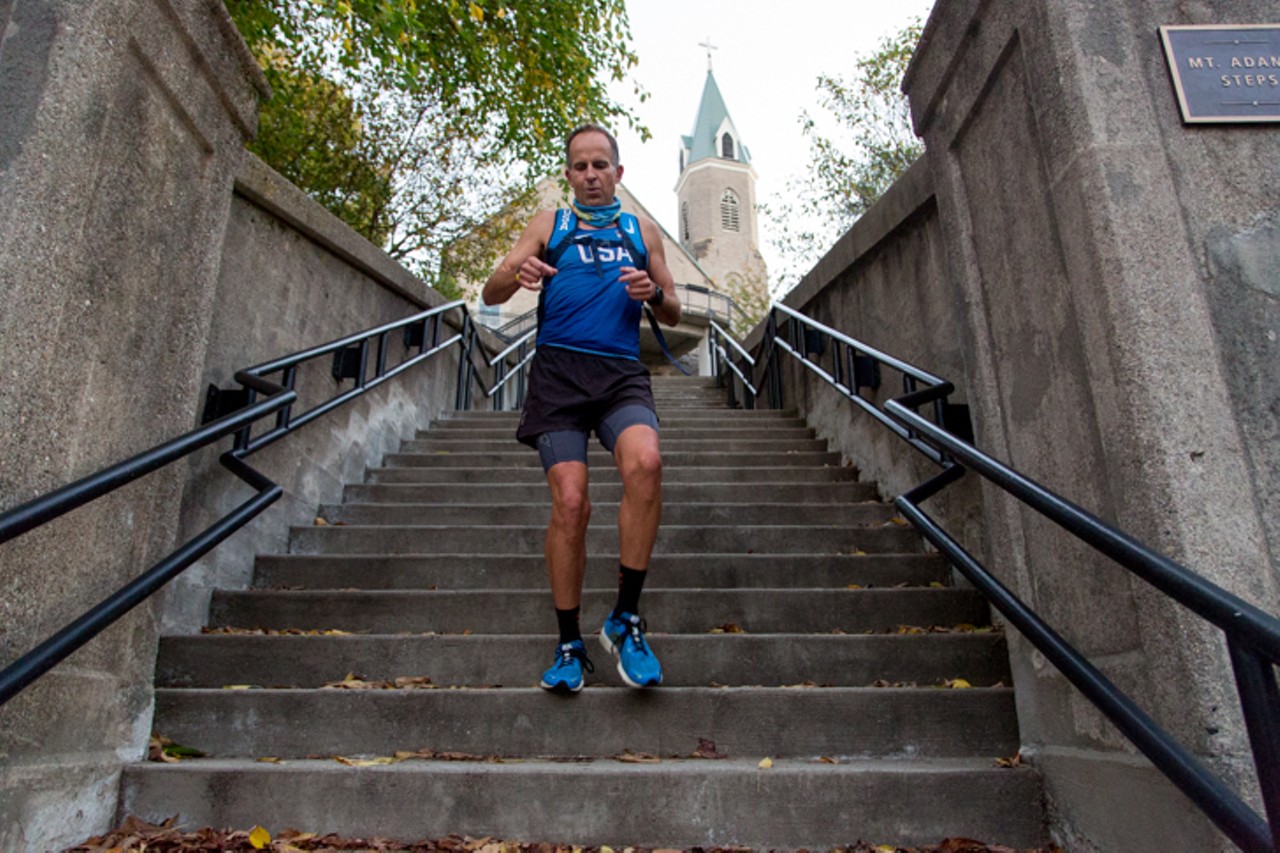
Vincent DiFrancesco
Lewis often uses the slopes of Mount Adams for homegrown hill training.
11 of 20
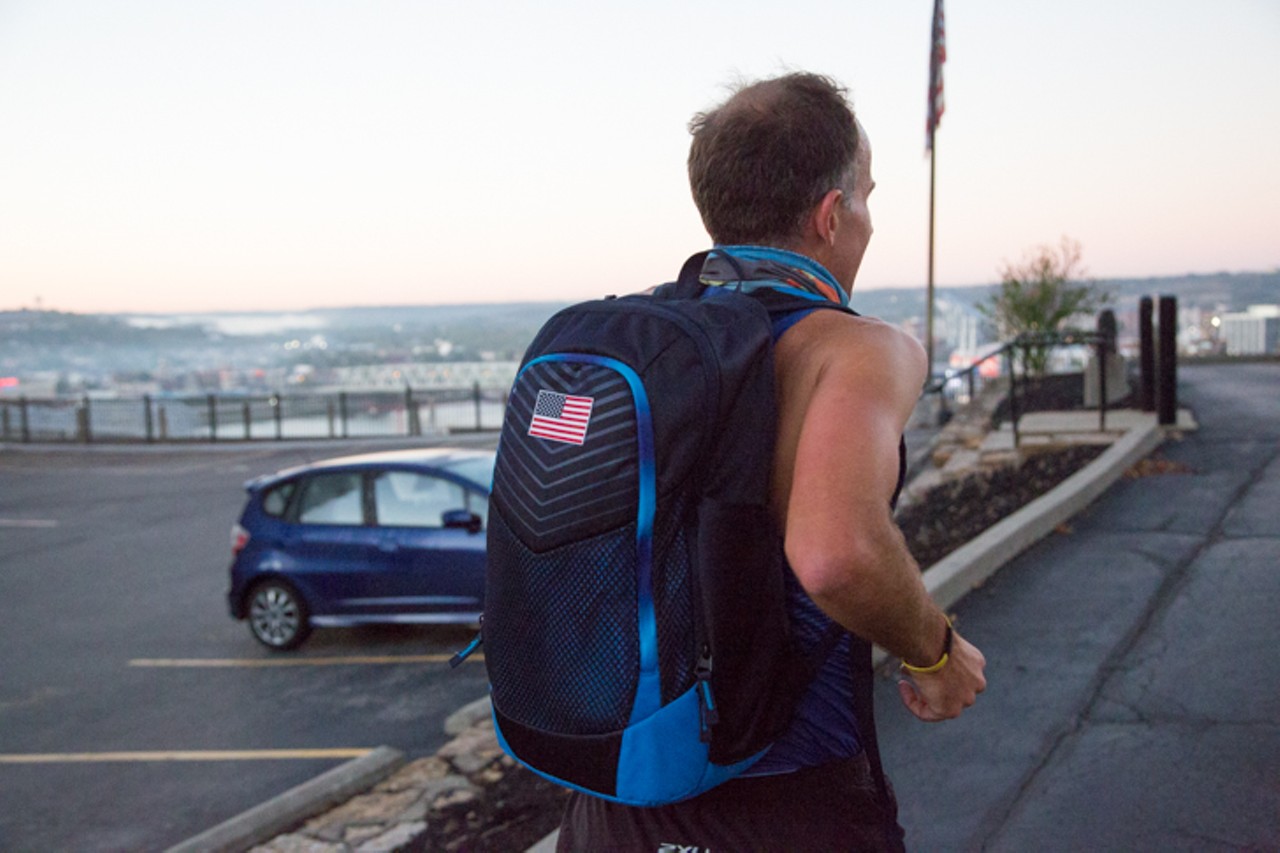
Vincent DiFrancesco
The athlete wears official Team USA gear with pride. He has represented the United States at the 24-hour World Championships and most recently at Big Backyard Ultra.
12 of 20
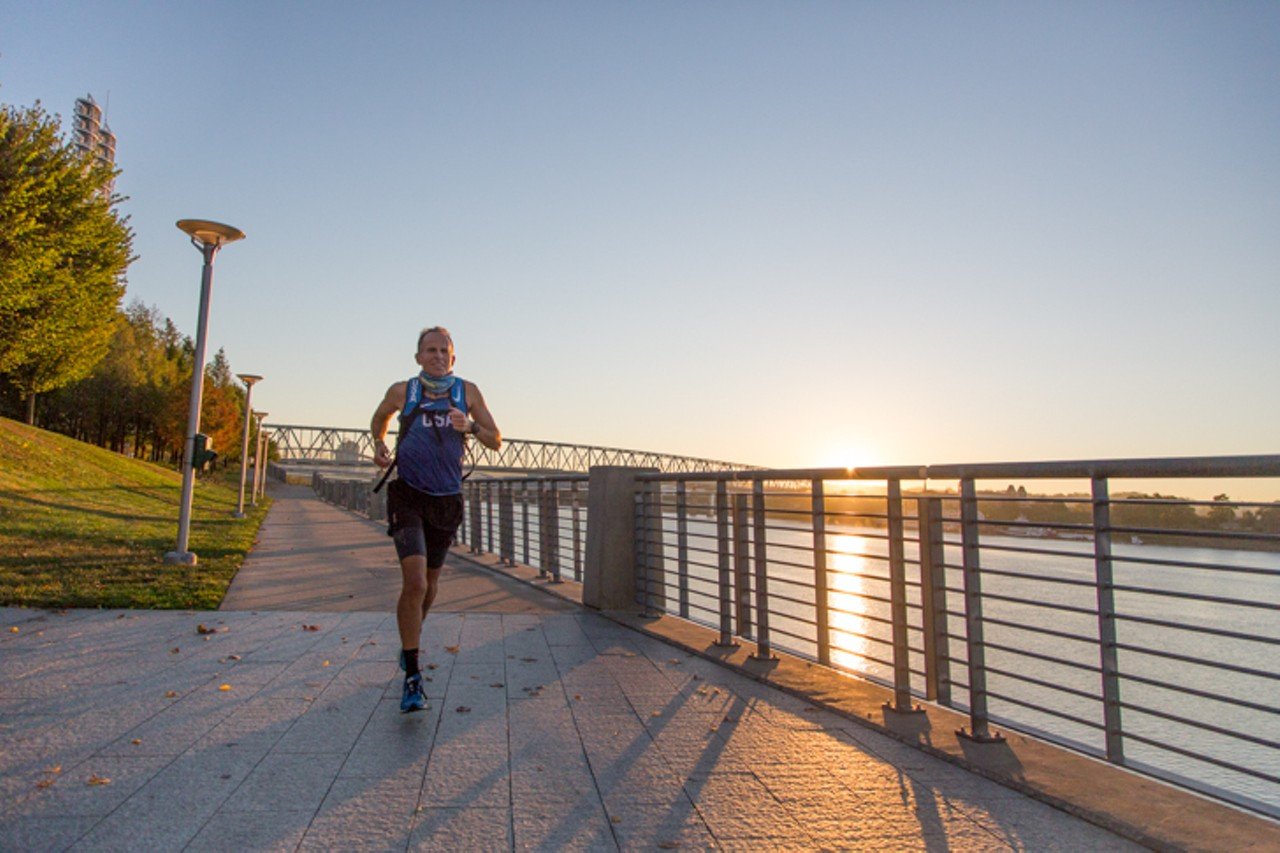
Vincent DiFrancesco
Lewis wants to convince others to run to work too. “Instead of being in a car for 15 minutes each way, I’m maximizing my time to be outdoors. Doing something active (each day) is so critical for the quality of life. It takes some effort to put into it, but it’s what we get in return … it’s just like investing.”
13 of 20
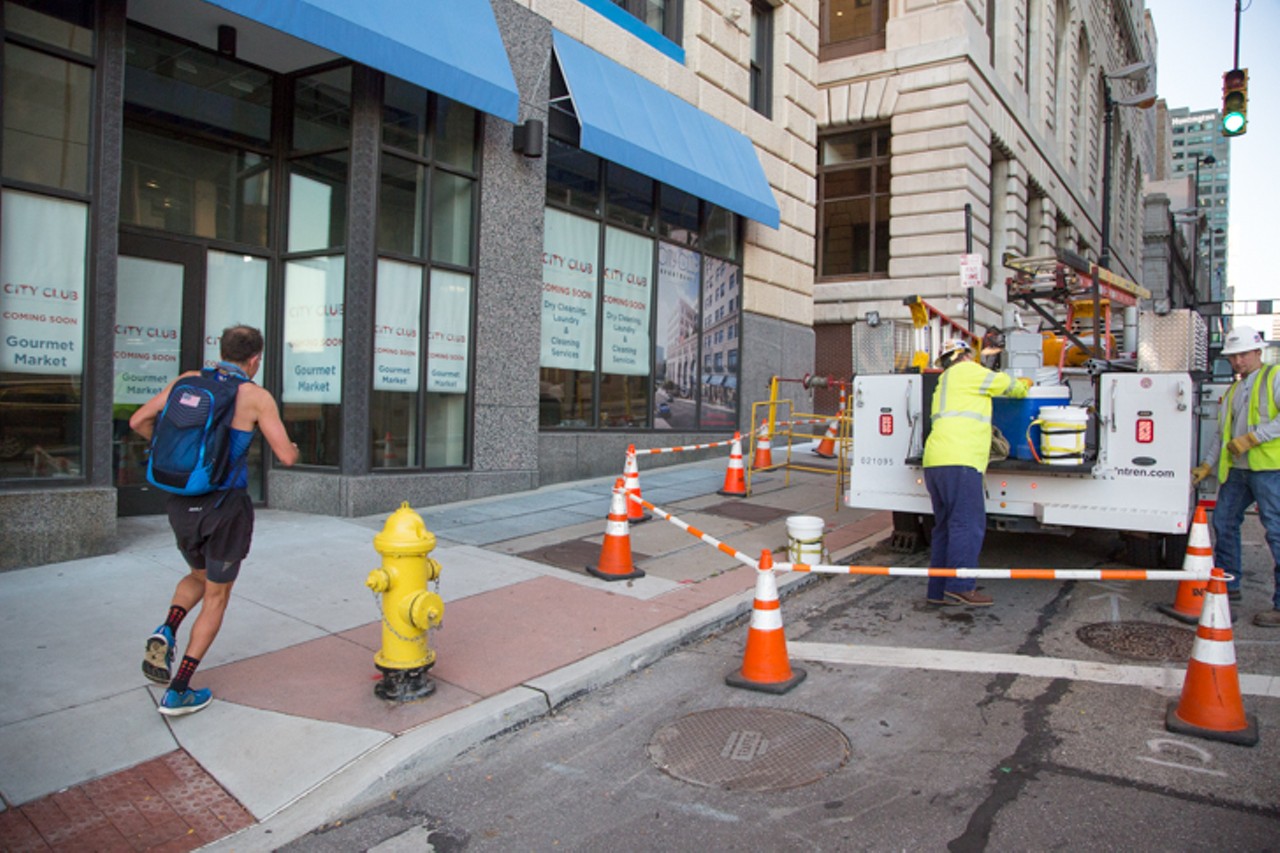
Vincent DiFrancesco
Most definitely a morning person, Lewis finds joy in traversing the city as it’s waking up. Most pedestrians receive a spirited “hello!” or “good morning!” from the athlete as he runs by.
14 of 20
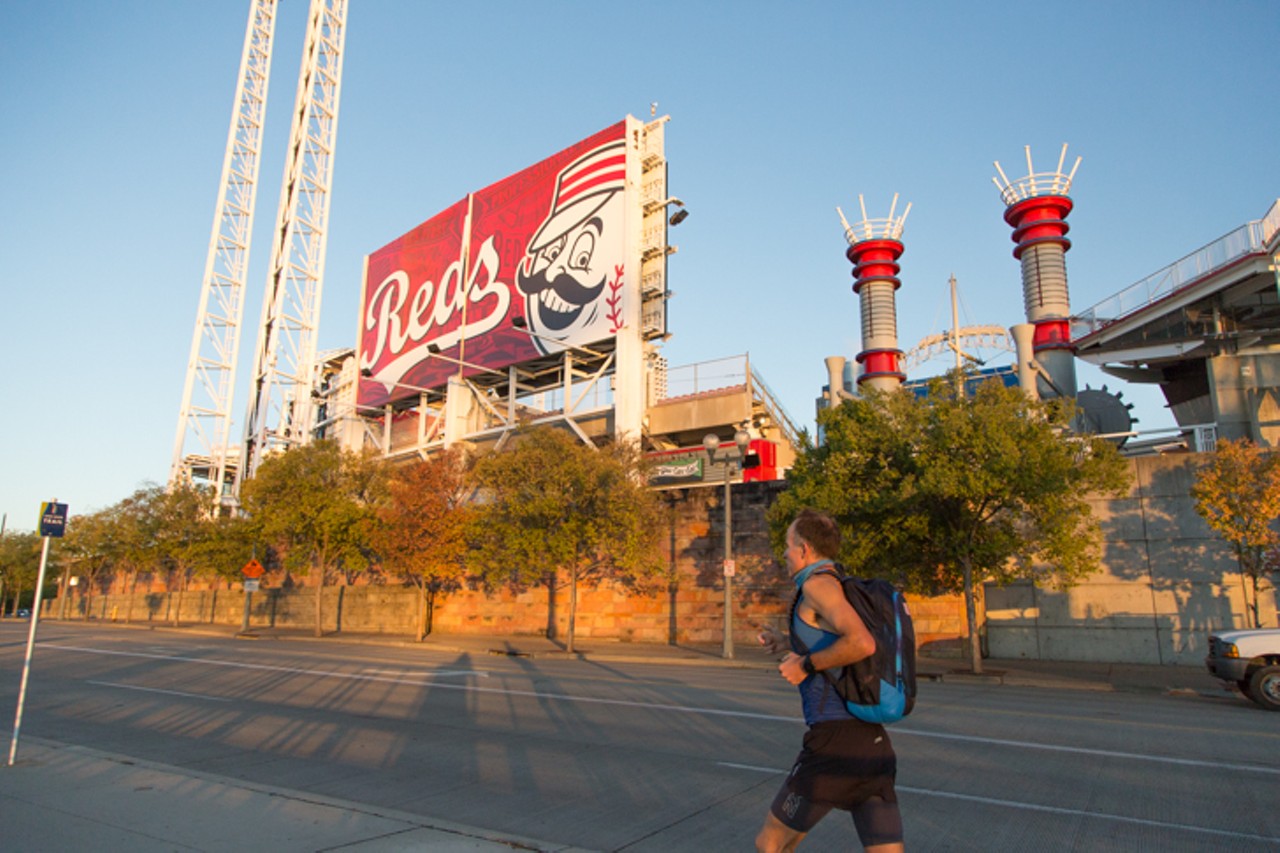
Vincent DiFrancesco
“Cincinnati is a mecca of running,” Lewis says. “People don’t necessarily realize that we have one of the best running cities in the world and the Flying Pig is one of the best marathons in the world.”
15 of 20
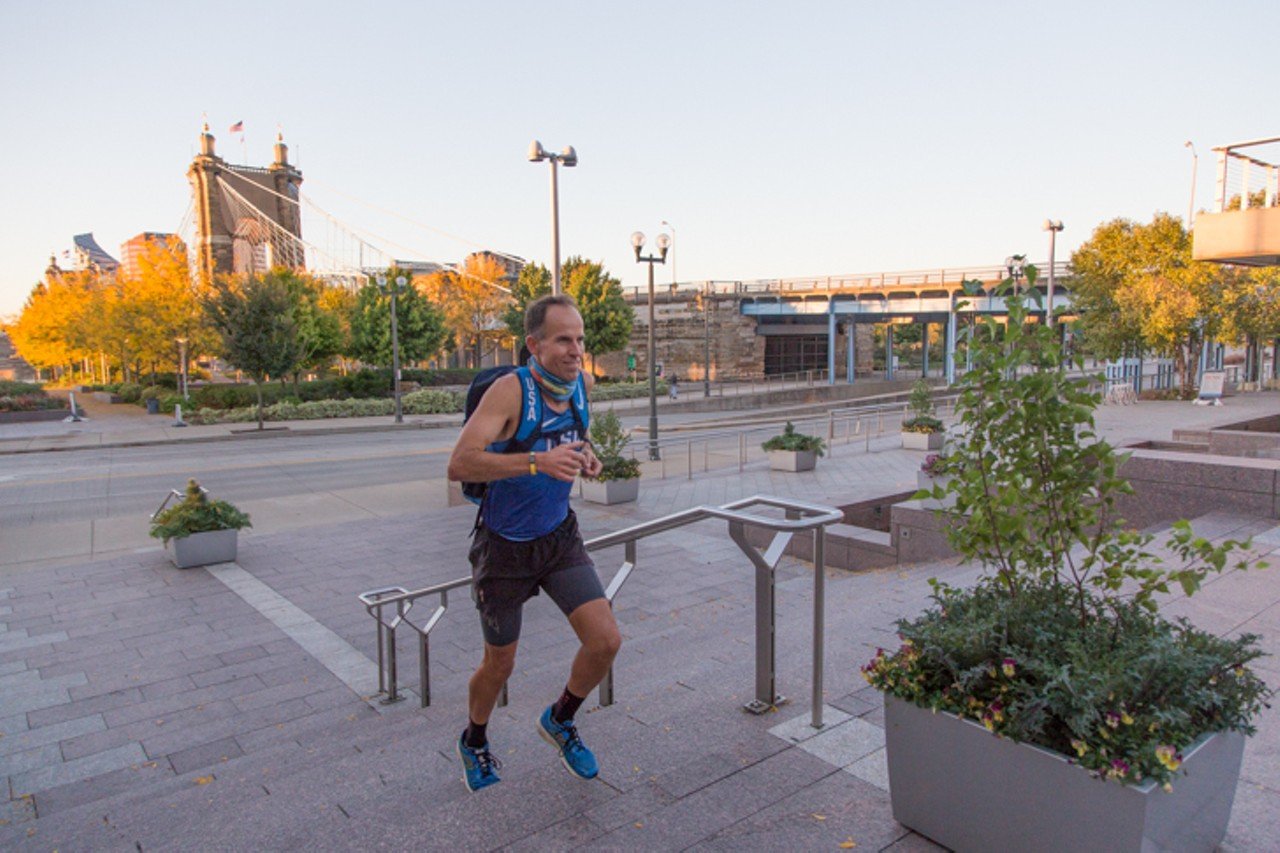
Vincent DiFrancesco
“Have someone who can help you be accountable,” Lewis suggests to new runners. “There are all these different running clubs (in Cincinnati) and that’s incredible because you'll build a camaraderie with those people and it'll hold you accountable.”
16 of 20
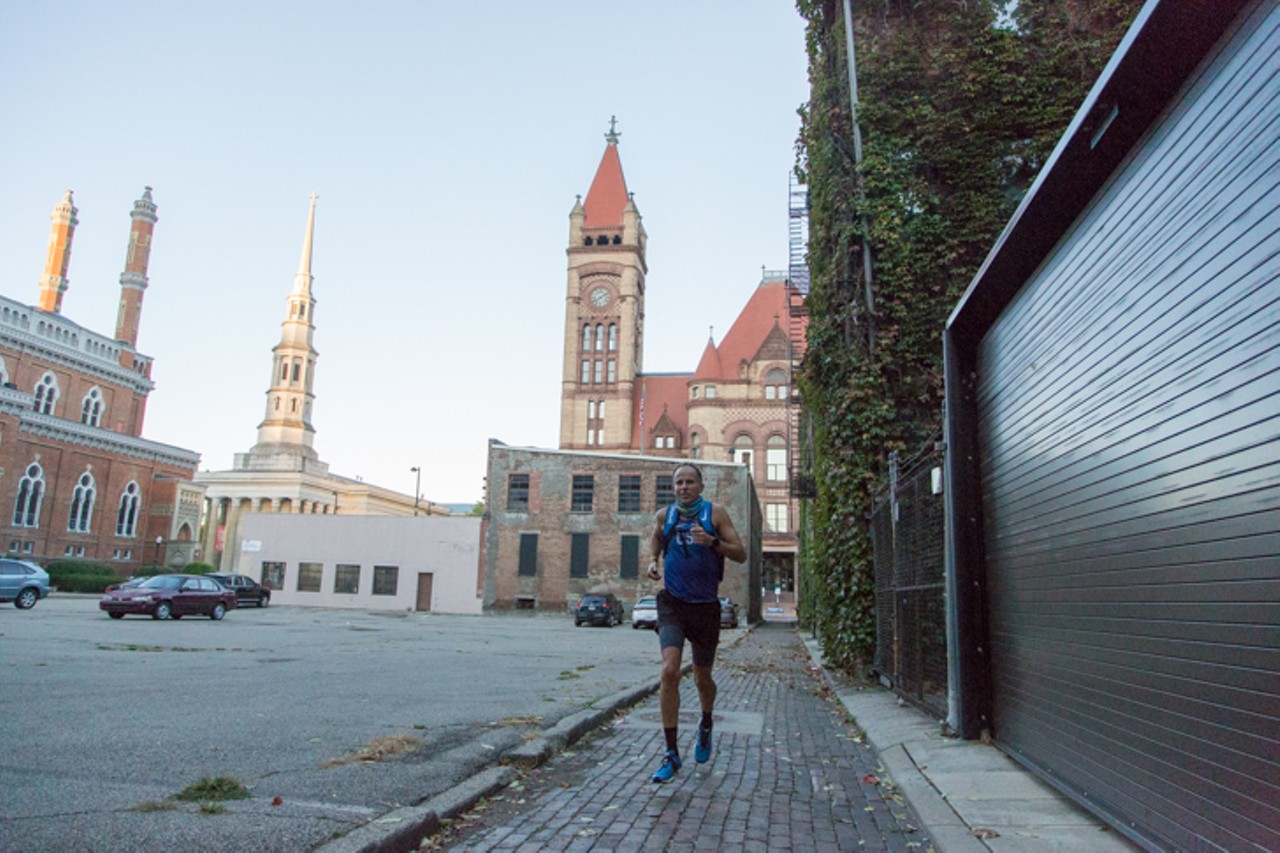
Vincent DiFrancesco
Lewis shows me his favorite historic alleyways downtown. He recommends Cincinnatians be creative with their running and discover different parks or trails they haven’t been to before. “It’s really fun to go explore,” he says.
17 of 20
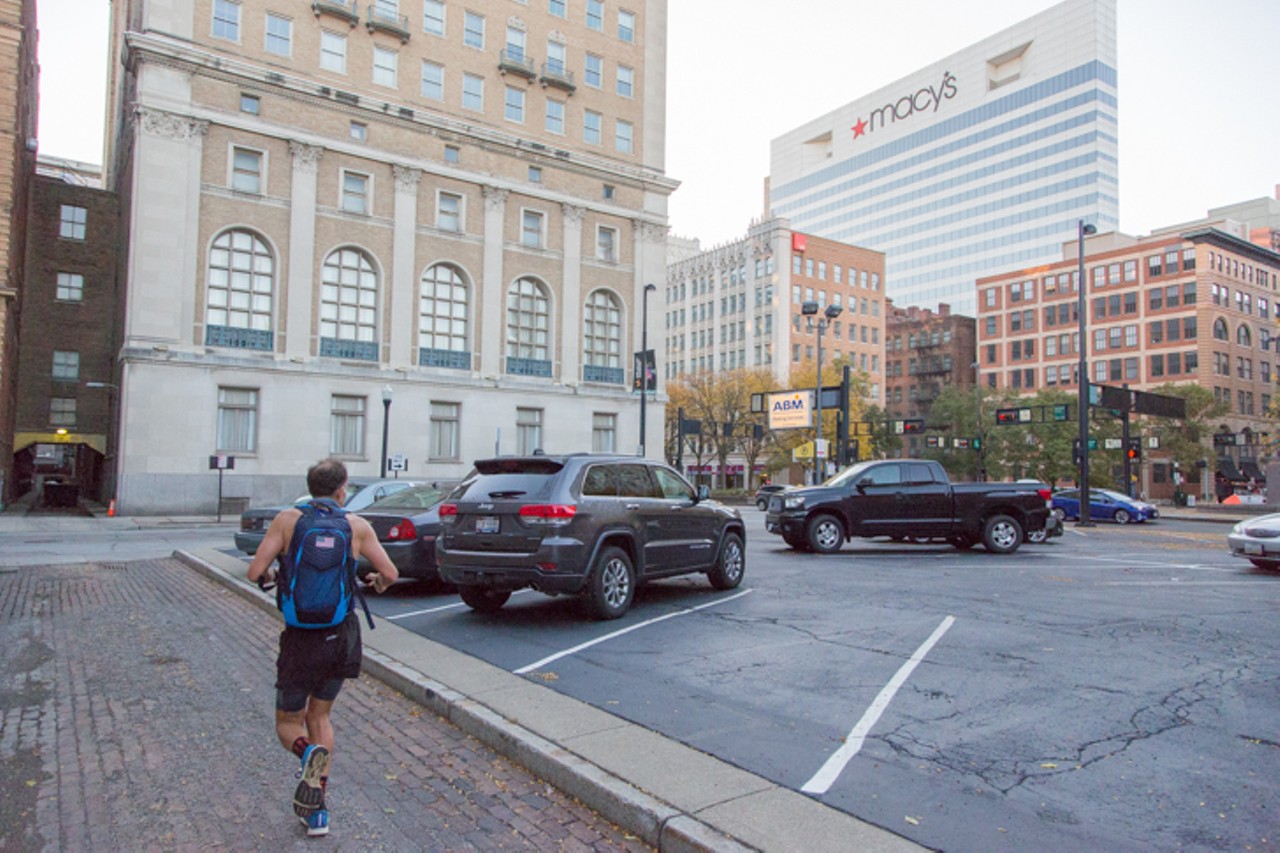
Vincent DiFrancesco
The ultrarunner also swears by his own personal calendar book. “I write down what I do every day, and I really think that’s a motivational technique. It’s very helpful to see what you have done and see your progress.”
18 of 20
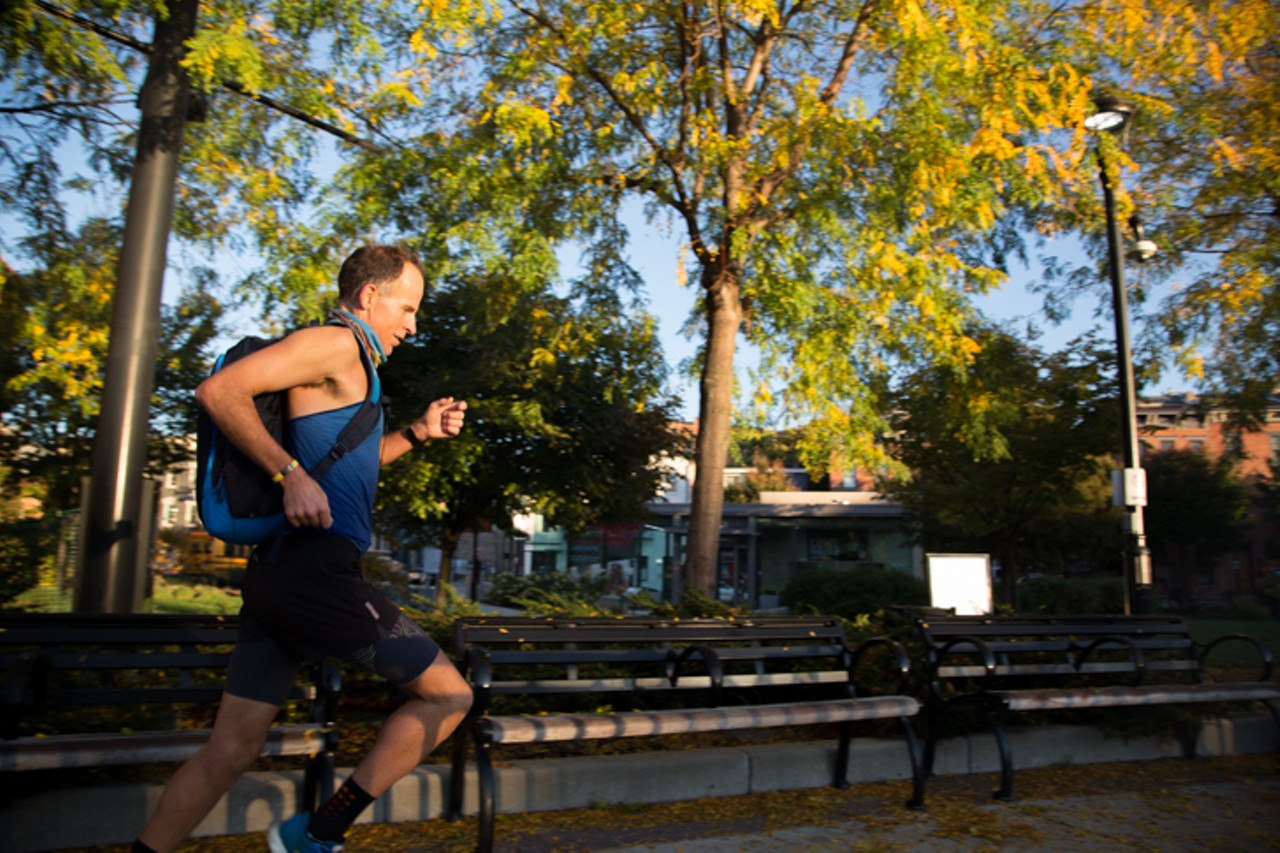
Vincent DiFrancesco
Lewis finishes his commute in front of Music Hall before beginning his day of teaching at the School for Creative and Performing Arts.
19 of 20
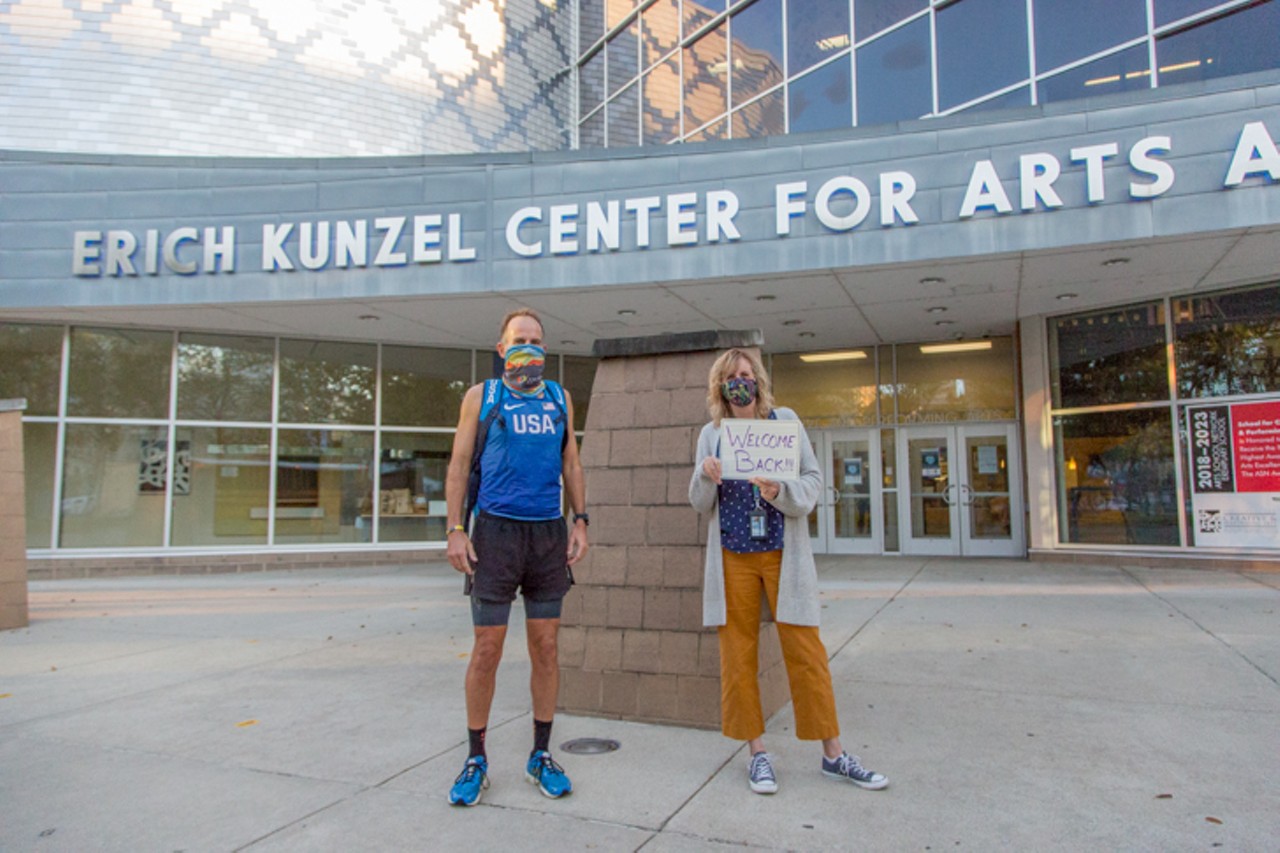
Vincent DiFrancesco
“This is history,” Lewis tells me as he enters SCPA. “First day back from the pandemic!”
20 of 20
- Local Cincinnati
- News & Opinion
- Arts & Culture
- Things to Do
- Food & Drink
- Music
- Cincinnati in Pictures
- About City Beat
- About Us
- Advertise
- Contact Us
- Work Here
- Big Lou Holdings, LLC
- Cincinnati CityBeat
- Detroit Metro Times
- Louisville LEO Weekly
- St. Louis Riverfront Times
- Sauce Magazine



